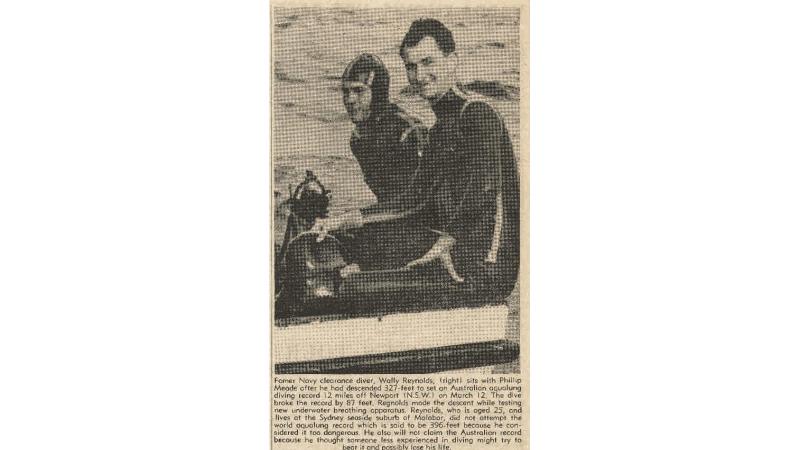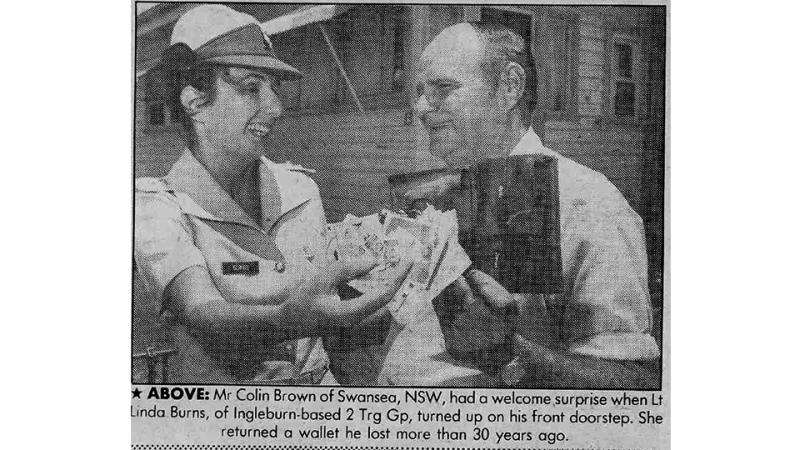17 July 2025
A Navy clearance diver has completed a record-breaking dive to lay eyes on a wreck that had not been visited in more than 120 years.
As part of the Sydney Project dive team, Lieutenant Ruslan Pnevski descended 160 metres to the wreck of SS Nemesis, a coal hauler that sank during a ferocious storm off the NSW coast in 1904.
The day started early with a 5.30am departure from Wollongong out to the wreck, which had been found by a company searching for lost shipping containers and only viewed through remote cameras.
The team arrived just after sunrise and dropped a shot line – used to guide divers to the wreck – but realised it landed off the target, and rough conditions prolonged the time to reposition it.
Lieutenant Pnevski and three other divers made it into the water at 11am and began their descent following the line through the darkening water.
The descent took about nine minutes and, as they approached the ocean floor, the lack of a shipwreck had Lieutenant Pnevski worried they had misplaced the line again .
“I saw the sand from about 140 metres and realised we weren’t on the wreck,” he said.
“For that brief moment I thought we might have to do a search for it, but only for a second or two, because then I saw it.”
Looming up out of the deep blue was Nemesis’ black silhouette.
“The feeling of seeing that is almost indescribable, knowing that you’ve hit the mark and the wreck is there, ready to explore,” Lieutenant Pnevski said.
“The excitement also took away the fact that I was suffering from high-pressure nervous syndrome, which was giving me visual disturbances.”
Propelled by underwater scooters, the team spent the next nine minutes filming and photographing the wreck, which they positively identified as Nemesis.
'More people have climbed Mt Everest than have dived to 100 metres, and the difference between 100 metres and 160 metres is massive.'
The wreck was unusual as the bow and stern had completely collapsed, but the superstructure was still intact.
Once it had been documented, Lieutenant Pnevski signalled the group to head back to the shot line and begin the six-hour decompression journey back to the surface.
While the first half went relatively unhindered, Lieutenant Pnevski’s rebreather stopped functioning three hours in.
“Two of my oxygen cells had a major fault and I had to switch over to my redundancy system,” he said.
“I was a little bit disappointed in the machine because after almost 10 years together it decides to pull that on my deepest dive.”
Lieutenant Pnevski spent the remaining half of the decompression watching the movie Titanic thanks to an underwater phone case.
The divers were out of the water about 6pm , and the first thing Lieutenant Pnevski did was pull the footage off his cameras to share with the surface crew.
At 160 metres, Nemesis is the third-deepest wreck in Australia, and the dive broke Lieutenant Pnevski’s personal record.
“More people have climbed Mt Everest than have dived to 100 metres, and the difference between 100 metres and 160 metres is massive,” he said.
“To go to 160 is quite unique, and to be only a number of a small amount of people in the world to be able to achieve a depth like that and do it in challenging conditions, it’s amazing.”
Lieutenant Pnevski is an instructor at the ADF Diving School and went for his first dive aged 16 with the goal of becoming a clearance diver.
He plans to revisit Nemesis with the Sydney Project in the future, and will be producing a documentary about the Nemesis dive, in conjunction with Heritage NSW.


